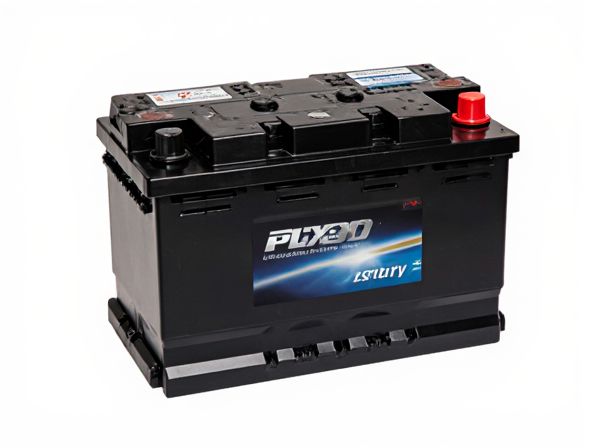
Photo illustration: Lithium-ion vs Nickel-metal Hydride
Lithium-ion batteries deliver higher energy density, longer lifespan, and lighter weight compared to Nickel-metal Hydride (NiMH) batteries, making them ideal for portable electronics and electric vehicles. NiMH batteries offer better safety, lower cost, and greater tolerance to overcharging and high temperatures, which suits certain applications like power tools and hybrid cars. Understanding the specific power, capacity, and environmental needs will help you choose the right battery type for your device or project.
Table of Comparison
| Feature | Lithium-ion (Li-ion) | Nickel-metal Hydride (NiMH) |
|---|---|---|
| Energy Density | 150-250 Wh/kg | 60-120 Wh/kg |
| Weight | Lighter, improves fuel efficiency | Heavier, impacts vehicle weight |
| Cycle Life | 1000-2000 cycles | 500-1000 cycles |
| Charging Speed | Fast charging supported | Slower charging times |
| Cost | Higher upfront cost | Lower initial cost |
| Temperature Performance | Better low temperature performance | Reduced efficiency in cold |
| Environmental Impact | Recyclable, but lithium mining impacts | Less toxic, easier recycling |
| Common Usage | Electric vehicles, hybrid cars | Hybrid vehicles |
Introduction to Battery Technologies
Lithium-ion batteries offer higher energy density and longer cycle life compared to Nickel-metal Hydride (NiMH) batteries, making them ideal for portable electronics and electric vehicles. NiMH batteries provide greater tolerance to overcharging and are more environmentally friendly due to fewer toxic metals. Both technologies use rechargeable cells, but lithium-ion's advancement in energy storage efficiency drives its dominance in modern applications.
Overview of Lithium-ion Batteries
Lithium-ion batteries feature higher energy density, longer cycle life, and lower self-discharge rates compared to Nickel-metal Hydride (NiMH) batteries, making them ideal for portable electronics and electric vehicles. These batteries utilize lithium ions moving between the anode and cathode to store and release energy efficiently. Advanced lithium-ion chemistries, such as lithium iron phosphate (LiFePO4) and lithium nickel manganese cobalt oxide (NMC), offer enhanced safety, thermal stability, and performance tailored to specific applications.
Overview of Nickel-metal Hydride Batteries
Nickel-metal hydride (NiMH) batteries offer higher energy density compared to older nickel-cadmium cells and provide a safer, environmentally friendlier alternative to lithium-ion batteries due to reduced risk of overheating and less toxic materials. NiMH cells excel in applications requiring moderate energy output and longer cycle life, such as hybrid vehicles and portable electronics, with typical voltages around 1.2 volts per cell. Despite lower energy density than lithium-ion batteries, NiMH batteries remain valued for their durability, easier recyclability, and better performance in cold temperatures.
Energy Density Comparison
Lithium-ion batteries offer significantly higher energy density, typically ranging from 150 to 250 Wh/kg, compared to nickel-metal hydride (NiMH) batteries, which generally provide around 60 to 120 Wh/kg. This higher energy density enables lithium-ion batteries to deliver longer runtime and lighter weight, making them ideal for portable electronics and electric vehicles. NiMH batteries, while having lower energy density, are favored for their safety, durability, and cost-effectiveness in applications requiring moderate energy storage.
Charging Speed and Efficiency
Lithium-ion batteries charge faster, typically reaching full capacity in 1 to 3 hours, compared to Nickel-metal Hydride (NiMH) batteries, which often require 4 to 6 hours due to lower charging efficiency. Lithium-ion cells have higher energy density and lower internal resistance, resulting in less energy loss during charging and discharging cycles than NiMH counterparts. This efficiency advantage makes lithium-ion a preferred choice for applications demanding quick recharge times and prolonged battery life.
Lifespan and Durability
Lithium-ion batteries typically offer a longer lifespan, averaging around 500 to 1,000 charge cycles compared to Nickel-metal Hydride (NiMH) batteries, which last about 300 to 500 cycles. Li-ion cells also exhibit superior durability due to lower self-discharge rates and better resistance to memory effect, enhancing overall battery performance over time. NiMH batteries tend to degrade faster under high-temperature conditions, reducing their effective lifespan relative to Lithium-ion technology.
Safety and Thermal Management
Lithium-ion batteries require advanced thermal management systems due to their higher energy density and susceptibility to thermal runaway, posing significant safety risks if improperly managed. Nickel-metal hydride (NiMH) batteries exhibit greater thermal stability and lower risk of overheating, making them inherently safer for applications with stringent safety requirements. Effective heat dissipation and monitoring technologies are critical for lithium-ion batteries to prevent overheating, fires, or explosions, whereas NiMH batteries' robust chemistry offers a safer, more stable alternative with less complex cooling needs.
Environmental Impact and Recycling
Lithium-ion batteries have a lower environmental impact during use due to higher energy density and longer lifespan, yet their extraction processes for lithium and cobalt pose significant ecological risks. Nickel-metal hydride batteries contain fewer toxic metals and are easier to recycle, but they generally have lower energy efficiency and shorter cycle life. Recycling infrastructure for lithium-ion is rapidly improving to recover valuable metals and reduce landfill waste, while nickel-metal hydride recycling remains established but yields fewer high-value materials.
Cost Analysis and Market Trends
Lithium-ion batteries exhibit higher upfront costs than nickel-metal hydride (NiMH) but deliver superior energy density and longer lifecycle, resulting in lower total cost of ownership over time. The global market trend shows a declining price curve for lithium-ion cells driven by advancements in manufacturing and economies of scale, while NiMH demand diminishes due to limited capacity improvements. Battery cost analysis reveals lithium-ion dominance in electric vehicles and portable electronics, with NiMH retaining niche applications in hybrid vehicles and power tools owing to cost-effectiveness and thermal stability.
Applications and Future Prospects
Lithium-ion batteries dominate electric vehicle and portable electronics markets due to high energy density and longer cycle life, outperforming nickel-metal hydride (NiMH) in these applications. NiMH remains preferred in hybrid vehicles and certain power tools for its robustness and safety advantages despite lower energy density. Future prospects favor lithium-ion improvements with solid-state technologies promising enhanced safety and capacity, while NiMH may sustain niche markets where durability and cost are prioritized.
 caratoz.com
caratoz.com